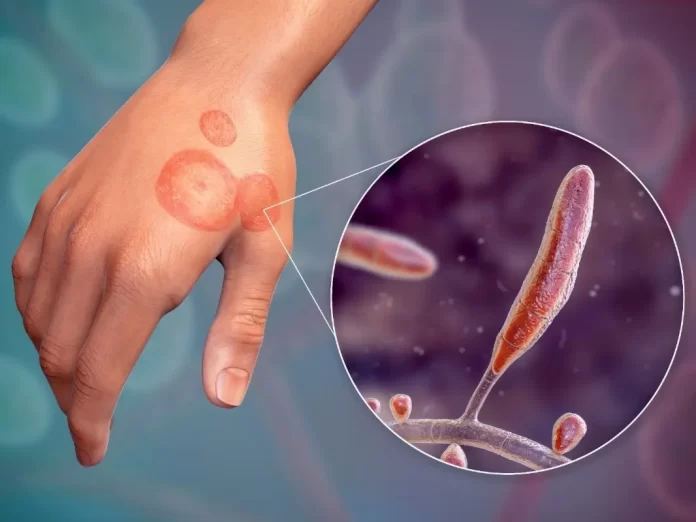A ring-shaped pattern appears on your skin as a result of ringworm, a contagious and itchy fungal infection. Treatments available over-the-counter and through prescription can halt the fungus’s spread to other areas of your body or to other people.
It is contracted by coming into contact with an infected person, animal, or item. Depending on the body part it affects, ingwormr goes by several names. Your body may have tinea corporis, or ringworm. This kind of ringworm impacts your face, torso, arms, and legs. Antifungal drugs, which are available over-the-counter or with a prescription, are used to treat it.
Types of ringworm
Depending on where it develops on your body, ringworm goes by several names, and it can happen almost anywhere. Infections include:
- Athlete’s foot, also known as tinea pedis, is a fungal infection that causes a burning, itchy rash on the soles of the feet and in between the toes. Blisters or scaly, cracked skin are possible side effects. Your feet can smell bad at times.
- Jock itch: A red, itchy rash in your groyne, upper thighs, or rectum is caused by tinea cruris, also known as jock itch. Blisters are experienced by some people.
- Scaly, red, itchy bald spots on your scalp are a symptom of scalp ringworm, also known as tinea capitis. Bald spots have the potential to enlarge and become permanent if left untreated.
- Hands (tinea manuum): Dry, cracked palms and patches that resemble rings are symptoms of ringworm.
- Beard (tinea barbae): Your cheeks, chin, and neck may develop ringworm. The areas may start to crust over or fill with pus.
- Onychomycosis, also known as tinea unguium, causes thick, discoloured, and deformed nails in the toenails or fingernails.
Symptoms
The following symptoms usually manifest four to fourteen days after skin contact with the fungus:
- Ring-shaped, circular scales or plaques.
- Patchy areas with a rounded, raised border.
- Skin irritation.
- Bald patches or hair loss in the afflicted area.
Causes
Ringworm is caused by a fungus, despite its name. Your skin, hair, and nails are naturally home to this kind of fungus. Nevertheless, the fungi begin to grow out of control when their surroundings become hot and humid. Anytime your skin comes into contact with the ringworm fungus on another person’s skin, you run the risk of contracting this infection.
Prevention
Ringworm prefers warm, humid environments. For months, the fungus can survive on household surfaces, clothing, towels, and sheets. To stop ringworm, do the following:
- replacing your pants and socks on a daily basis, or more frequently if they get soiled or wet.
- showering right away from physical activity or contact sports.
- sandals or shower shoes in public showers and locker rooms, as well as at the pool.
- towel-drying your skin, particularly in the spaces between your toes, after taking a shower.
- never share combs, clothes, towels, washcloths, sheets, or other personal hygiene products.
- using hot water and detergent to wash linens, towels, sports equipment, and clothing.
- cleaning surfaces with bleach or Lysol-type sprays.
- treating ringworm in pets, if they have the infection.
- cleaning hands well after handling animals.
- Your risk of a fungal infection is increased if you have a weakened immune system or live in a warm, humid climate.




























